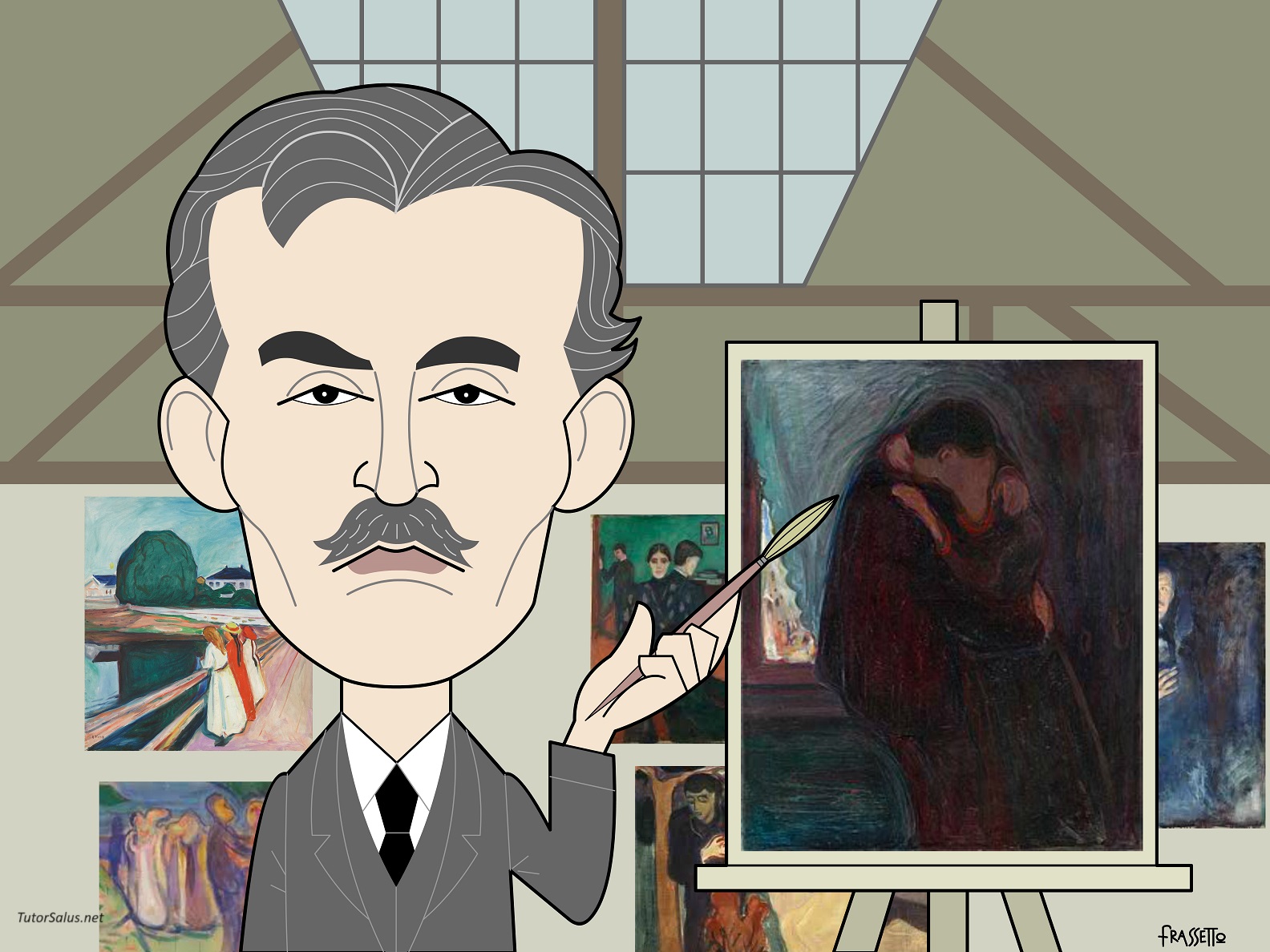Why is it so horrifying ?

Original painting by Stefano Frassetto (6).
“Why is it so horrifying the idea that removing is an experience of lying ?” (1)“
Maybe is still correct the above quotation by Giacomo B. Contri about a common experience, the anguish : about which we come to know very soon, already in early childhood, and towards which an initial, but disadvantageous defense is the removal of the experience given rise by anguish.
The exceptional talent of Edvar Munch in painting, and of only a few painters indeed (2), surely is in being able – that is infact the power of thinking – to go up again the origin of one’s anguish, untieing it up to weave a more profitable defense instead of the removal itself.
“I was walking along the road with two friends when the sun was setting, the sky suddenly coloured in blood red. I stopped, and really tired I leaned against a fence. On the black-blue fjord and on my own town there were blood and tongues of fire. My friends kept on trembling, and me too was still trembling with fear… And I was feeling that a big scream was pervading the nature…” (3)
In the shape of a visual hallucination which turns away the reality, Munch was describing in a note from his diary the experience of the ‘return of a removed memory’, the feared and hard-fought satisfaction, unsustainable indeed… The removal, as a matter of facts, still remains irresolute also if practiced, even it does menace a subject and his, or her own physical integrity too.
The 1893 painting belongs to the maturity of Munch who had already developed a competence not only in painting but also in his own relation with it. He sensed in painting, to which he applied himself by chance, a privileged and very personal way, but definitely alternative, to anguish. At school he had realized he could excel in psysics, chemistry and mathematics and chose to specialize at the ‘Drawing School‘ of Oslo, and then at the ‘School of Arts and Crafts‘ of Christiania in 1881 : but it was maybe only when Munch met Hans Jaeger (4), a not excellent writer and even psychologically disturbed in comparison with the reserved and discreet Edvar, that the writer did kick-start again a favourable, personal intuition into Munch’ thinking.
That was infact a real change of course for the painter and not at all ephemeral towards a sincerity he hadn’t known before, which approached him to the very reason of his past submissions, and also pointed out easily and precisely the point where he could correct his mistakes, and his ingenuity too that now became corrigible then : into Munch’ work, into his many repetitions of the same few pictures - not just ‘The scream‘, as a matter of facts - is therefore evident that his own deep interest was not the approval by the public.
There isn’t any pedagogical aim infact in his works, any attempt ‘to explain’ to the spectator, who could imagine everything when being in front of one of his pictures. Munch’ evident goal is to get to touch the tangle he himself was living in order to untie it, without any uncertainty and without any doubt.
Anguish flows into horror when it is not processed, Munch had seen such epilogues among his own relatives too, and had realized that it couldn’t be due to a motionless fate.
With the surprising lucidity of a surgeon, he could be building a very personal and favourable path of work, not to be reproduced but for its peculiar practicability.
Marina Bilotta Membretti / Cernusco sul Naviglio – October 26, 2019
(1) ‘Lavoro dell’inconscio e lavoro psicoanalitico‘, by Giacomo B. Contri, 1985 SIC Edizioni.
(2) I’m going to dedicate an editorial to Renè Magritte, Belgian painter lived between 1898 and 1967 and considered one of the best interpreter of Surrealism.
(3) This is a memory, which Edvar Munch (Loten, Norway 1863 – Oslo 1944) managed to bring back on the frame of one of the four versions of ‘The scream’, the one of 1895. “The scream” (1893) is a work exhibited at the ‘National Gallery’ of Oslo.
(5) Hans Jaeger (1854-1910), wrote “Between Kristiania and Bohemen“ (1885) and became famous due to his raw controversies against the Norwegian culture rather than to his real value as an author and writer.
(6) Stefano Frassetto is born in Turin in 1968. After his degree in Architecture at ‘Politecnico’ he begun as graphic novelist for local magazines. In the ‘90s he edited in France too, on ‘Le Réverbère’ and on ‘Libération’ : then he created ‘Ippo’ for ‘Il Giornalino’ and then the stripe ‘35MQ’ for the swiss magazine ‘20 Minuti’. In 2000 he came into ‘La Stampa’ as portraitist for cultural page and the insert ‘Tuttolibri’, then for the weekly ‘Origami’. Today he works also for the swiss magazine ‘Le Temps’.

